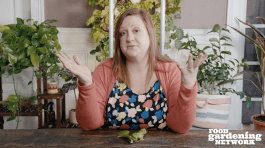
There’s no such thing as a perfect garden. And no matter how long you’ve been gardening, I bet you’d agree that something will always come up, even if it’s just a wet season. After all, you don’t have control over the rainfall, or the diseases that garden bugs might carry on to your plants. What you do have control of, is nipping it in the…bud (ha!).
The best way to treat the challenges your plants might come up against is to understand how to identify them, and to act quickly, when you see garden warning signs.
Let’s start with some common plant nutrient deficiencies, because deficiencies can often look like disease, so it’s best to know which one you’re dealing with.
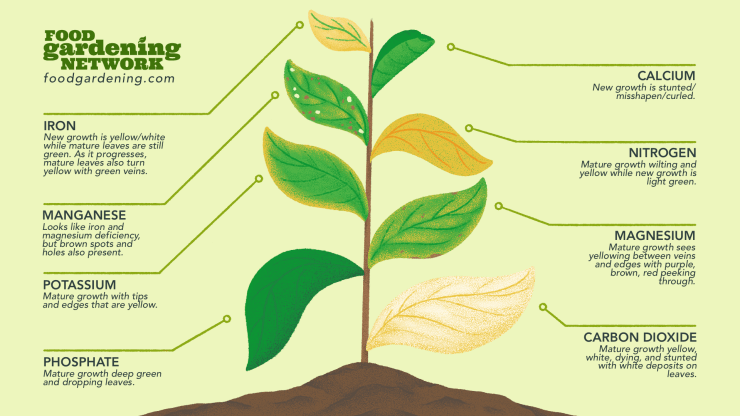
- How to improve iron in soil: Usually the result of over-watering and nutrients being leached out of the soil. That said, soil is typically rich in iron on its own, so beyond over-watering, you also need to look at other factors that could be causing too much iron, like high pH, high phosphorous, or there’s simply too much clay. A quick soil test is to pour vinegar into your soil and see if it bubbles, meaning it’s alkaline. If it is, add chelated iron or a soil acidifier to help.
- How to increase calcium in soil: Add lime to your soil in the fall, and use (baked) eggshells in your compost.
- How to increase manganese in soil: Improve drainage, increase the soil pH above 5.3 with dolomite or lime.
- How to increase nitrogen in soil: Add blood meal, composted manure, add coffee grounds, plant peas or beans to fix nitrogen.
- How to increase potassium in soil: Add potash fertilizer, kelp or seaweed, compost with banana peels, or Greensand.
- How to increase the magnesium in soil: Add Epsom salts, calcitic or dolomitic agricultural limestone.
- How to increase phosphate in soil: Keep pH in the 6-7 zone, add bone meal, rock phosphate, compost, or manure.
- How to increase carbon dioxide in soil: When carbon dioxide is lacking, plants can’t photosynthesize, so if you can believe it, this is where talking to your plants can actually work. A fan with fresh outdoor air can help too.
Disease Garden Warning Signs
For more photos and video of garden warning signs, see the video above, but below is a quick tour of some of the highlights:
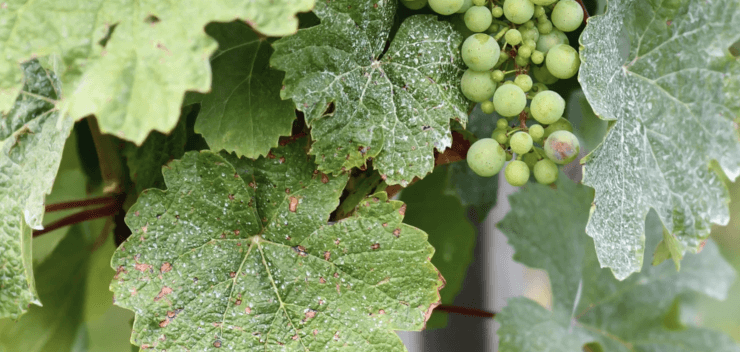
Powdery mildew is the biggest nemesis of the squash family. It’s a white fungus you’ll see clearly growing on top of your leaves and will spread throughout your plant. The best way to treat it is to remove the infected leaves, though I rarely find that helps. Instead, do that but also try a sulfur-based fungicide, and use a balanced fertilizer that isn’t too high in nitrogen, which can also be the culprit. That’s why tomatoes and squash are great companion plants – tomatoes need a lot of nitrogen and will take up any excess.
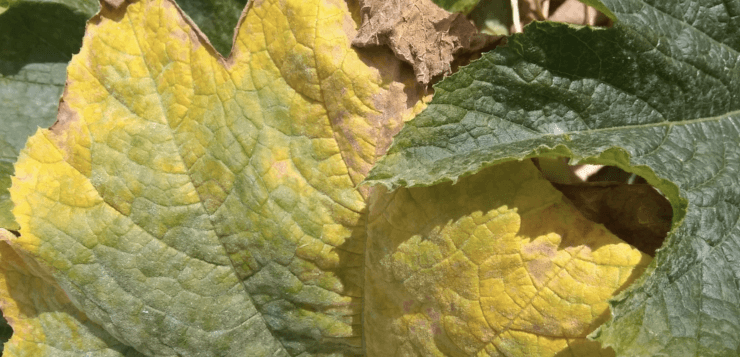
If you have yellow leaves paired with the edges curling and wilting, you may have Bacterial Wilt. In squash, you can check by cutting the stem. If there is an oozy liquid that comes out, you’ll need to trash the whole crop. Don’t even compost it, and definitely don’t plant in the same spot next year. Just about every plant can get bacterial wilt, from tomatoes to squash, beans, and cucumbers, so if you see the signs, you know what to do.

Leaf Spot can affect most garden plants, but there are different forms of the disease depending on what plant it is. The one thing to know is whether it’s a bug-eating your plants or if it’s actually Leaf Spot. Bugs will typically leave chewed-up sharp edges around their spots, whereas Leaf Spot will typically have brown or black spots that look like targets, and the leaves themselves may also be yellow or become yellow. If you see leaves like this, snip them and remove them from your garden. Do not compost them. Apply a bio fungicide to keep it from spreading.
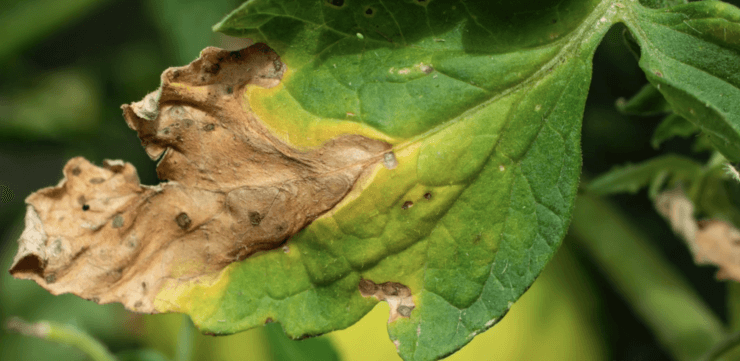
Leaf Blight, often confused with leaf spot, comes in many forms for all plants, and can show up as large brown spots with yellow outlines on perfectly good green leaves. The size of the blemish is how you determine blight from spots. Blight is usually one or several large blemishes on a leaf, whereas Leaf Spot is usually a collection of tiny spots.
On tomato plants, you can have early Blight, and late Blight. The best way to prevent it is to not touch your plants when they’re wet because they absorb bacteria through moisture easily. Also try preventing bugs where you’re growing tomatoes because bugs can let the bacteria in as well. Unfortunately, blight spreads easily, so you need to destroy the crop it’s affecting and hope for the best for the other crops.
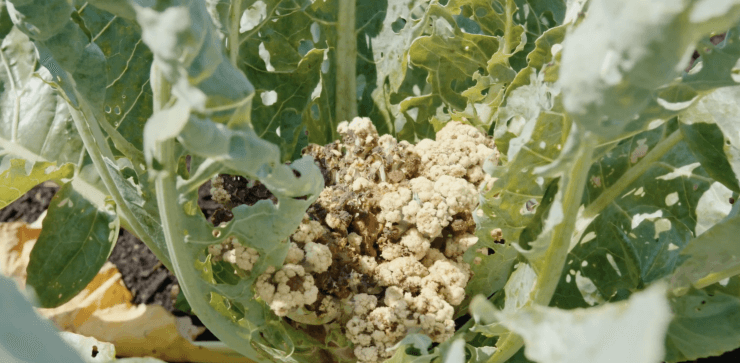
Bacterial Soft Rot is another plague on your garden. Brassicas like Cauliflower have been, in my experience, so difficult to keep free of disease for such a small crop, that I prefer to pay my local farmer $4 for a head at my neighborhood farmstand. If your cauliflower is turning black, it’s probably Bacterial Soft Rot, which happens when temperatures are high, and you have an abundance of bugs and low calcium in your soil. The disease gets in through small cracks and just grows until you get a head of black cauliflower. There’s no way to treat it, other than to remove the plant, but there are ways to avoid it, like not keeping your garden too damp, addressing any bug issues, and in general not messing with it, which could crack stems and let in the bacteria.
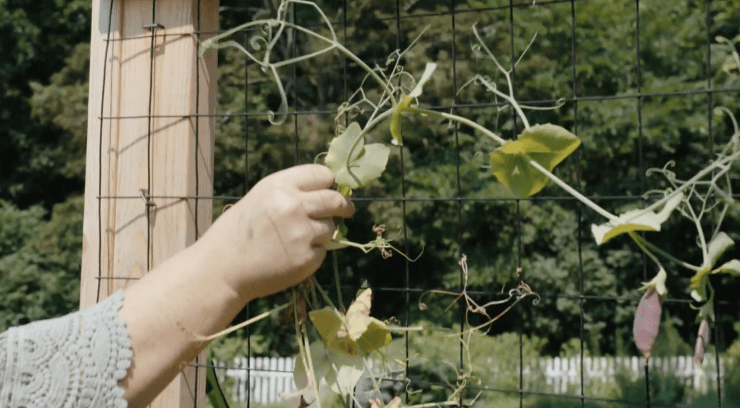
Root Rot can typically be spotted when the lower half of your plant is yellowing and browning, along with the leaves, even if what’s on top is still green and fruiting (which it won’t be for long). This is particularly common in pea plants. Ironically, if your soil is well fertilized, your plants might be able to grow fast enough to outrun the disease and produce crops, and adding nitrogen can help.
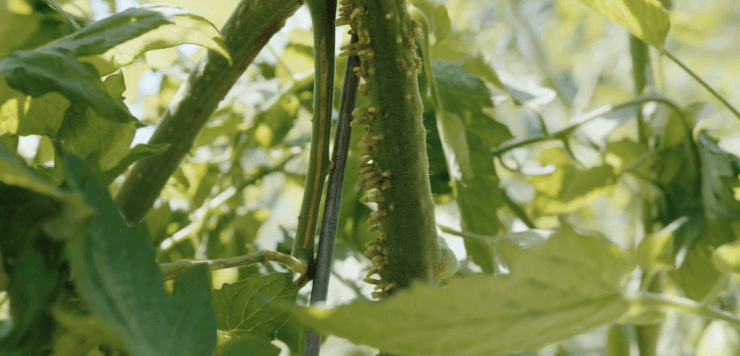
Want to know a fun non-disease that looks like a disease? Adventitious roots. These little arms you see growing on your plants are just roots, and if you were to plant your stalk underground, they’d start feeding the plant. They’re totally harmless even if they’re a little grotesque.
All of these diseases make up the #1 reason to rotate crops so you don’t end up with the same diseases year after year.
Garden Warning Signs with Legs
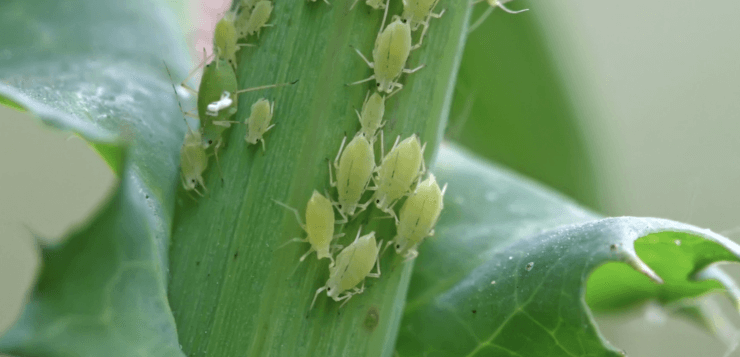
Now we won’t go too far into bugs here because there’s so much ground to cover, but let’s talk about Aphids because they’re probably the biggest pests in a garden next to slugs. Neem oil is your friend here. They hate the stuff. A DIY insecticide made of olive oil and dish soap mixed with neem oil will also help because the olive oil and dish soap will keep them from sticking to the leaves, while the neem oil keeps them away with the smell. I put together a video tutorial on making this “bug spray” in our July 2020 issue of Food Gardening Magazine. Some people release ladybugs in their garden too, because ladybugs love to eat aphids. So if you see one, don’t swat them away, thank them for their service.
Brightly colored marigolds also work as a trap crop, because aphids will flock to it instead.
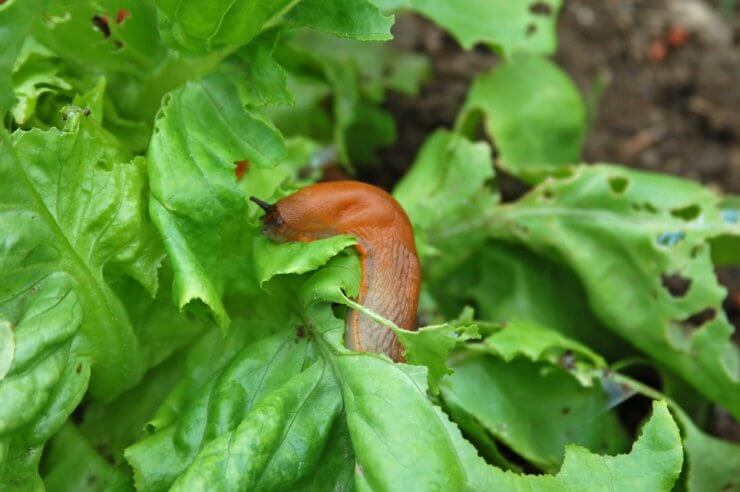
As for Slugs, you’ll know you’ve been hit when you see big bite marks on your leaves, especially cabbage and cauliflower. This one’s easy though. Leave out a small shallow bowl of beer. Slugs are always up for a brewski and will crawl into your bowl, get drunk, and not be able to crawl back out. Works every time!
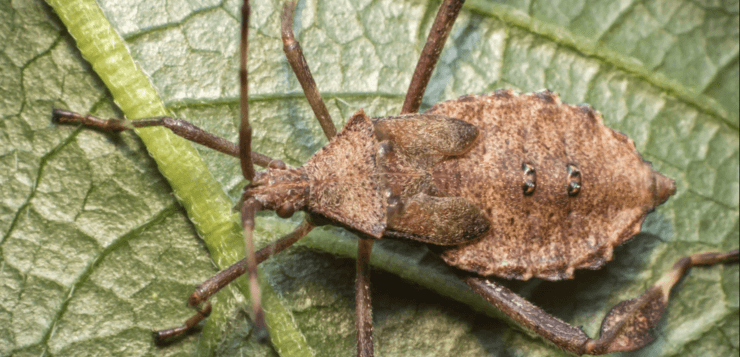
And Squash Bugs may pop up now and again. They’re light green as nymphs and look like this as adults, and they’re happy to eat your squash plants and spread disease into their chomped bits. The good news is, like most bugs, they don’t like any type of common insecticidal soap spray. So spray away.
If you want to know which bugs you don’t need to worry about because they either pollinate or eat predator bugs, give a hat tip to Ladybugs who eat aphids, Bees, who pollinate the flowers on our plants, Praying Mantis who eat the bigger predators like grasshoppers and beetles, and Lacewings, who are pollinators while their larvae eat aphids and even caterpillars. Spiders are another garden helper, who are happy to trap any and all bugs and eat them. And Ground Beetles might look like predators but don’t mistake them for their garden-murdering cousin the colorful Japanese beetle, because ground beetles will actually take care of your nematodes, caterpillars, thrips, and silverfish.
I know I covered a lot here, and even more in the video above (a much more visual way to digest this information), but there’s plenty more, so leave a comment below if you have a specific question about garden warning signs I can try to help answer.


 Previous
Previous


Very informative, Amanda.
After Finally Hand Picking Tiny Green Caterpillars And Meally Bugs Off My Eggplants, I Now Have Large Purple Spots and then the leaves die. What Could That Be?
It sounds like your eggplant might have a blight or fungus. If you see spots developing your best bet is to remove and destroy (do not compost) the leaves in hopes that it will not spread further.
Thanks great information
Good and actionable info. Thank You.
Best video ever! lots of great simple information ad the photos are so helpful.
Great info. Thanks.